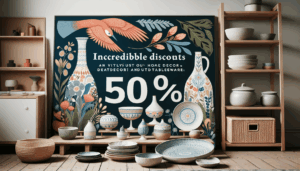Transform your home into an oasis of tranquility and beauty with indoor trees! Incorporating plants into your home decor is not just a matter of aesthetics but also well-being. They can improve air quality, regulate humidity levels, and even reduce stress. Furthermore, taking care of them can become a relaxing hobby that connects you with nature.
One excellent choice for adding a touch of nature and elegance to your indoor spaces is the Ficus Danielle. Known for its upright growth and abundance of small-sized leaves, it not only beautifies your home but also contributes to air purification by removing ammonia, formaldehyde, or xylene from the environment.
Originally from Asia, it has perfectly adapted to indoor life, reaching up to three meters in height when given proper care. Lighting is crucial for its well-being; it requires a brightly lit area but without direct sunlight exposure, which could burn its leaves. Therefore, placing it near a window where it can receive diffused natural light is ideal.
As for watering, it prefers moist soil without being waterlogged, as excess water can lead to root rot. Maintaining a good level of humidity both in the environment and the soil is beneficial for its growth and overall health.
It is one of the indoor trees that are relatively easy to care for, making it an attractive option for those who do not have much time to dedicate to gardening but wish to enjoy the presence of a tree in their home.
The bay tree, scientifically known as Laurus nobilis, is a plant that has been valued throughout history for its aromatic leaves and imposing presence. Traditionally, the bay tree has found its place in outdoor gardens and as a source of the laurel leaves used in cooking. However, its adaptability and aesthetics have made it a popular option for indoor decoration.
The bay tree is a perennial shrub that, with proper pruning, can be shaped into an elegant and easy-care indoor tree. Its ability to adapt to shade makes it ideal for those spaces in the house that do not receive direct sunlight. Additionally, the bay tree requires no intensive care.
The Ficus Lyrata, commonly known as the fiddle leaf fig, is a tree that has gained popularity in recent years for its imposing presence and large green leaves that add a touch of nature and elegance to any indoor space. Originally from the tropical regions of West Africa, this indoor tree has become a favorite among interior design and gardening enthusiasts.
Its beauty lies in its broad and glossy leaves, which resemble the shape of a lyre or violin, hence its name. These leaves are not only attractive to look at but also help purify the air, making it a healthy choice for the home.
It requires bright indirect light, so placing it near a window where it can receive filtered sunlight during the morning is ideal. It’s important to avoid direct midday sunlight, as it can burn its leaves. Watering should be moderate, allowing the top layer of soil to dry out between waterings to avoid overwatering, which can lead to leaf drop and root rot.
The Pachira aquatica, commonly known as the money tree, has gained popularity in homes for its beauty and its supposed ability to attract good fortune. Originally from Central and South America, this plant has perfectly adapted to the indoor environment, becoming a preferred choice for those interested in indoor gardening and home decor.
It is recognizable by its thick trunk, often decoratively braided in its juvenile stage, and its green and glossy foliage that unfolds at the top. While it’s less common for it to flower indoors, its presence alone already adds an exotic and natural touch to any space.
It prefers bright indirect light but can tolerate lower levels of illumination. Avoid direct sunlight that can burn its leaves. Regular watering is needed, allowing the top layer of soil to dry out between waterings. It’s crucial to avoid waterlogging to prevent root rot. It prefers well-drained soil, rich in peat, that maintains some moisture without becoming saturated.









